|
Excited for a new partnership in the Lega Basket Serie A 🏀
Grazie Brindisi for choosing HRV4Training We wish you the best for this season! 🔬📲 Last week I ran a survey on Twitter, which was triggered by seeing the data below: reduced resting heart rate during the first 6 months of the pandemic when analyzing HRV4Training data. The data shows a trend that is the opposite of what most of us would have expected.
In this post, I’ll go over the data in more detail, covering changes in resting physiology, sleep, training, and perceived stress in the first 6 months of the pandemic. Read the full story, here. In the past few weeks I had the pleasure to get to know Francesco Cuzzolin thanks to our partnership with the EuroLeague Players Association
Francesco needs no introductions, but I’m gonna do it anyways: first European to become Head Strength and Conditioning Coach in NBA (@ Toronto Raptors), formerly at Benetton Treviso, Virtus Bologna, the Russian National Basketball Team and Italian National Basketball Team + lecturer in training / re-training and injury prevention at the University of Verona and of Padova, Research and Innovation Director for Technogym, currently personal trainer for Andrea Dovizioso Francesco is also an expert in HRV monitoring, and has been using the available technologies for decades. Needless to say, we clicked In the first episode of his new podcast, we tried to break down the science and application of HRV and stress monitoring with a lot of practical insights. I hope this will be a useful resource for anyone getting started with our technology and striving to get their athletes to peak performance Link here Excited to share the news that we are partnering with ELPA, the EuroLeague Players Association
One of ELPA’s objectives is to provide its members services that help them maximise and prolong their careers Therefore, ELPA and HRV4Training are announcing a multi-year deal that will allow ELPA members to benefit from a tool which measures their heart rate variability (HRV), and provides a detailed analysis of how their bodies react to their stress levels during the season. HRV4Training app will be used to monitor physiological responses to a busy schedule made of frequent games, traveling and all that elite sport such as professional basketball encompasses Boki Nachbar (Managing Director, ELPA): “We continuously seek for ways to help our members take advantage of newly accessible technologies for professional athletes, such as HRV4Training. Especially in current climate players need to understand how their bodies react to various intense moments that happen during the season. Mastering that understanding will help them to better control the stress and it can therefore prolong and enhance their careers." Thank you and all the best for the upcoming season
In this video with Rebecca Caroe at the Rowing Chat, we discuss:
Thank you for having me! I'm excited to share the news that I am taking a role at Oura as Data Science Advisor
The Oura ring is a piece of technology I really like. It's small, user friendly, it can measure physiology accurately, and has great potential on a broad spectrum of applications in health and performance - as we have seen recently with the COVID detection work embraced by the NBA and WNBA This is also one of the very few devices we have been recommending at HRV4Training as it captures high quality heart rate variability (HRV) data during the whole night I was fortunate enough recently to get to know better some of the people behind it, and fully embrace their vision and way of working. I am looking forward to provide my contribution and help the team to develop meaningful insights from physiological data Let's get to work After a short break football season is about to start again in Italy
I’m proud and excited to be supporting for a third year Bologna Football Club, helping the team to monitor physiological responses to training and lifestyle stressors I hope HRV4Training will make it easier to keep an eye on the athletes' health as well during these exceptional times It feels always special to sign my home team. Grazie Nicolò, e forza ragazzi! ❤️ 💙 Excited to have been invited by the scientific journal Sensors to set up a special issue on smartphones and wearable sensors for heart rate monitoring, as guest editor. Contributions ranging from technology development to applications relying on such data are welcome.
Please learn more about the special issue at the link below (or here). I am looking forward to reading your contributions > What's stress?
> What about the autonomic nervous system? > How does heart rate variability (HRV) play a role? > When and how should you measure your HRV? What can you do with the data? Learn more at the link below. Thank you Andrea for having me! In this last part of my introductory series on HRV Biofeedback, I will provide an overview of the main outcomes of HRV Biofeedback interventions, in terms of performance changes as well as physiological or psychological changes. I will first report on early explorations, then move towards higher-quality studies and finally cover recent attempts to investigate HRV Biofeedback interventions in more applied and practical settings.
In this video, we discuss:
In questa puntata per gli amici italiani, parliamo di:
- cos'è l'HRV - come ho iniziato a studiarlo - a chi può essere utile questo parametro - come utilizzare i dati - esperienza nel mondo delle startup Grazie Manuel per l'invito I've discussed (virtually) my thesis at Vrije Universiteit Amsterdam and completed my Master's in Human Movement Sciences, specializing in high performance coaching. Abstract of my thesis below or at this link.
We will submit this work for publication, hence at this stage the full text is not available. Objectives: To determine if changes in resting heart rate (HR) and heart rate variability (HRV) during the beginning (first 10 days) of a three-week training camp at altitude are representative of the athlete's training adaptation at the end of the training camp. Methods: Four elite triathletes (2 male and 2 female), spent 23 days in Namibia at 1655 meters of altitude for two consecutive years in January 2019 and January 2020. Resting HR and HRV (the root mean square of successive RR intervals, or rMSSD) were measured daily upon wakening, while training data (GPS, heart rate) was acquired during cycling and running workouts. The athlete group was divided in responders and non-responders to the training camp at altitude based on the ratio between velocity and heart rate during aerobic running workouts of moderate duration. In particular, athletes whose velocity to heart rate ratio during workouts at week three was within the athlete's smallest worthwhile change (SWC) of pre-camp values, were considered responders. The difference in resting heart rate, rMSSD and the coefficient of variation of rMSSD (CV rMSSD) between the two weeks prior to the training camp and the beginning (first 10 days) of the training camp were computed as potential markers of future training adaptation. Results: Resting HR was significantly more elevated during the beginning of the training camp for non-responders (N = 3, HR difference = +4.6 bpm) with respect to responders (N = 4, HR difference = +0.5 bpm, p = 0.023). The CV rMSSD also increased by a greater extent for non-responders (+10%) with respect to re-sponders (-3%, p = 0.015). The difference in rMSSD was lower during the first week of camp for non-responders (-10 ms) with respect to responders (+6 ms), but this difference was not significant (p = 0.336). Conclusions: Athletes that responded positively to a three-week training camp at altitude showed a more favorable physiological response during the beginning of the training camp (smaller resting HR difference, lower CV rMSSD). This information can be used to further adjust training plans at the individual level. In this study, the authors put to the test standard block periodization vs HRV-guided training, showing better results for the HRV-guided approach. Personally, I believe this paper is what I've been working for in the past decade.
It doesn't take much to understand that our capacity to handle stress is limited, and that stressors (training as well as lifestyle) can be better balanced by most of us. It is however far from straightforward to develop valid, reliable and easy to use instruments that can enable this process, to the point that new research and practical insights can be derived consistently by the use of such an instrument. More of this please! > The principle HRV helps us to quantify individual responses to stress. The hypothesis for HRV-guided training is therefore that by providing the most appropriate training stimuli in a timely manner, when your body is ready to take it, positive adaptations will occur and you will be able to improve performance > The protocol The HRV4Training app was used to collect data first thing in the morning. When the HRV baseline fell outside the normal values for an athlete, training intensity changed from high-intensity training to low-intensity training or rest > Outcomes Performance outcomes (VO2max, peak power output, ventilatory thresholds, and a 40-minute time trial) were all improved in the HRV-guided group, which also showed a better physiological profile (reduced CV HRV), highlighting a better response. Learn more about the study, how you can use the same approach and monitor individual responses to stress, at this link Improve self-regulation and better cope with stress using HRV4Biofeedback, the camera-based Heart Rate Variability (HRV) Biofeedback app
WHAT'S BIOFEEDBACK? Heart Rate Variability (HRV) Biofeedback is a technique that can directly affect physiological and psychological factors through deep breathing exercises and is an ideal strategy to help us self-regulate and better cope with stressful situations Practically speaking, HRV Biofeedback consists of providing an individual with real-time feedback on instantaneous heart rate and respiration changes while being instructed to breathe at low frequencies You can learn more about the psychological and physiological benefits of deep breathing and HRV Biofeedback, at HRV4Biofeedback.com HOW CAN I BENEFIT FROM BIOFEEDBACK? Life can be demanding, from both a physical and psychological point of view Our health and performance can be affected by how we are able to effectively cope with stressful situations and deal with anxiety, or in broader terms, our ability to emotionally self-regulate is key The goal of HRV Biofeedback is to improve self-regulation, therefore impacting positively our health and performance In this episode of the OCR Underground Show, we discuss what HRV is exactly, how you can use it in your training, and the best ways to measure it.
We also discuss some projects we've been involved with monitoring HRV during self isolation and its effect on the nervous system. Enjoy and thank you Mike for having me! Last week I had a chat with Lucas Rockwood, founder of Yogabody. It was a pleasure to catch up for a second chat about three years since our first episode together.
What You’ll Learn (link here):
Thanks Lucas, I hope things we'll get better soon in Barcelona as well. Take care! |
Marco ALtiniFounder of HRV4Training, Advisor @Oura , Guest Lecturer @VUamsterdam , Editor @ieeepervasive. PhD Data Science, 2x MSc: Sport Science, Computer Science Engineering. Runner Archives
May 2023
|
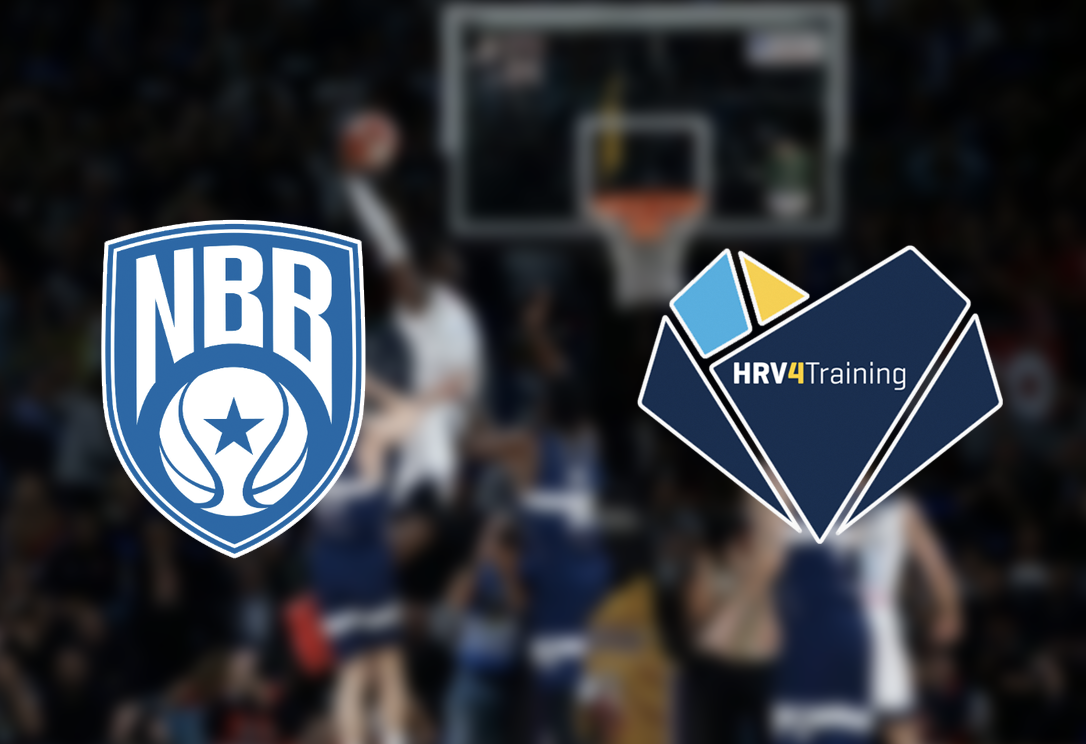
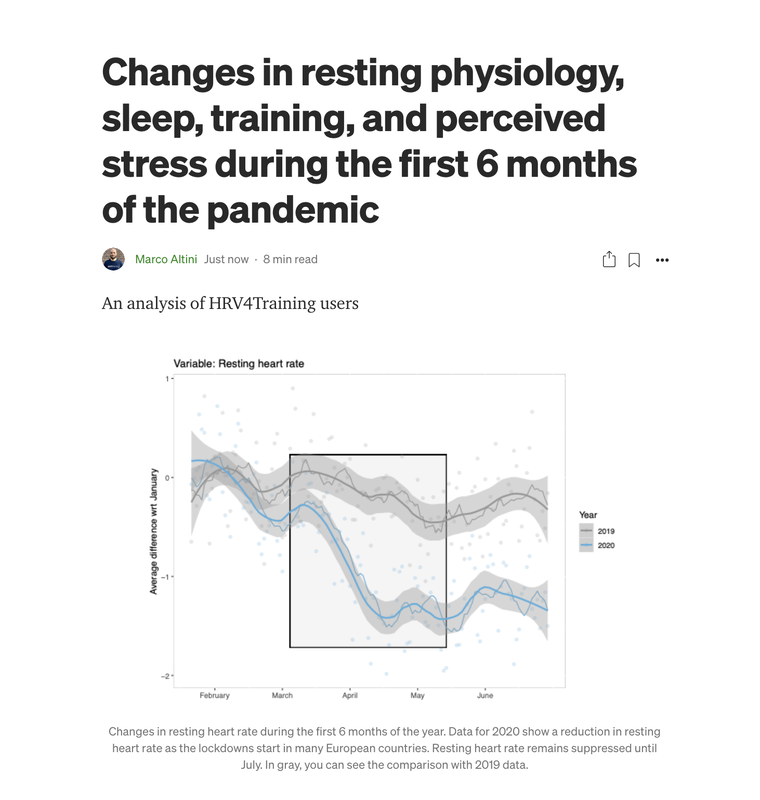
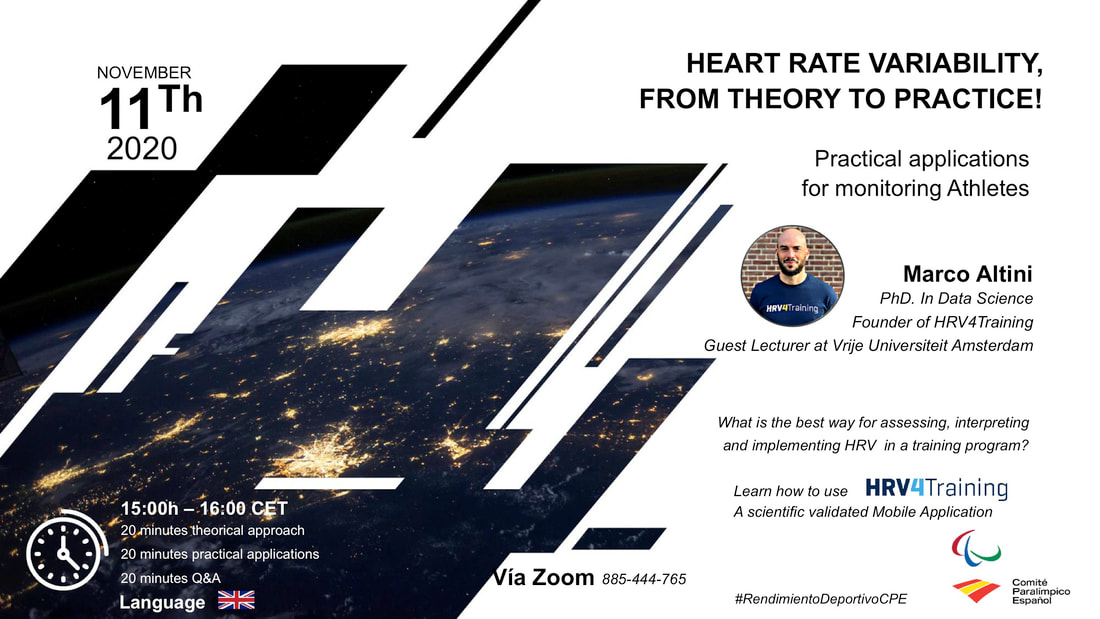
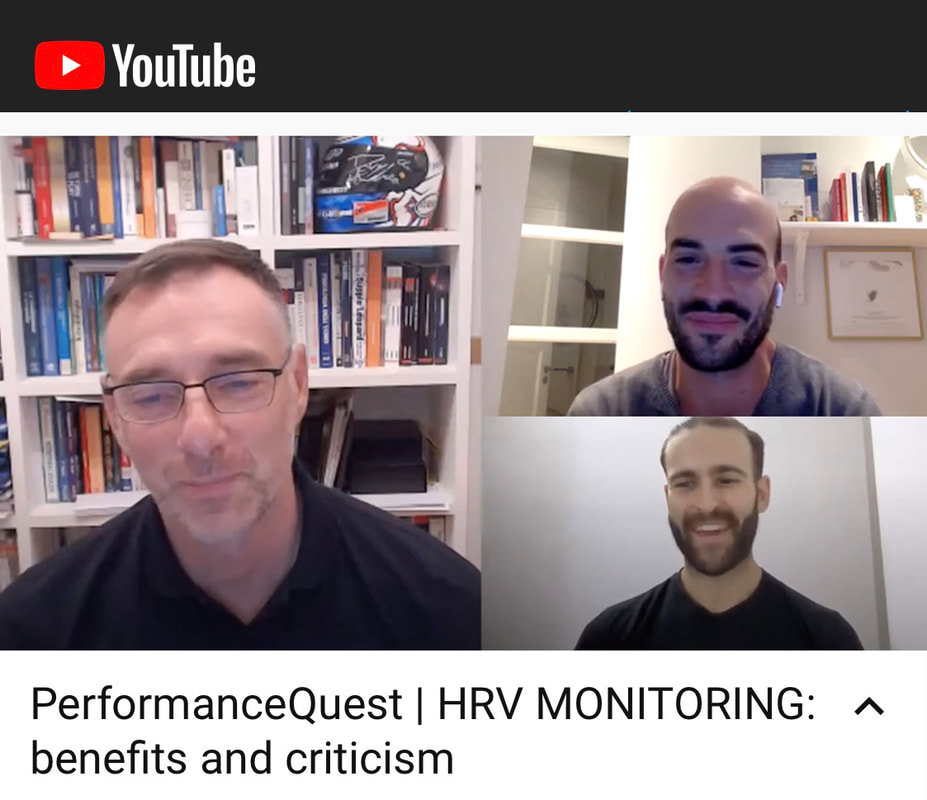
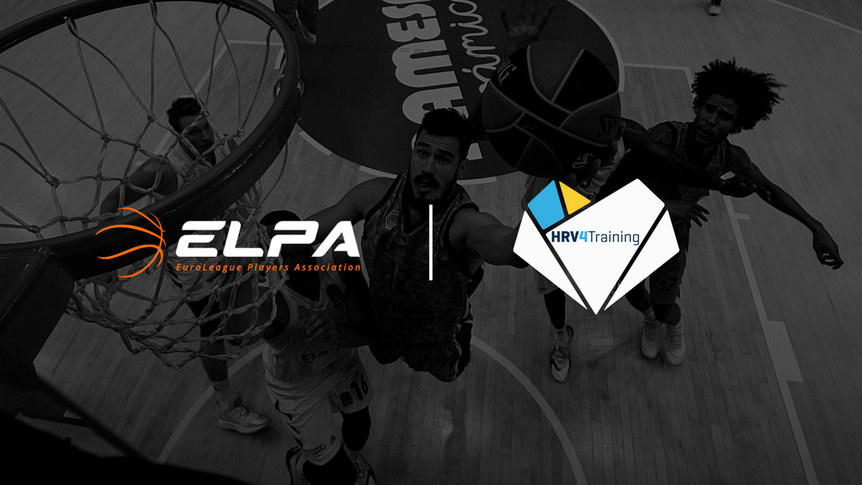
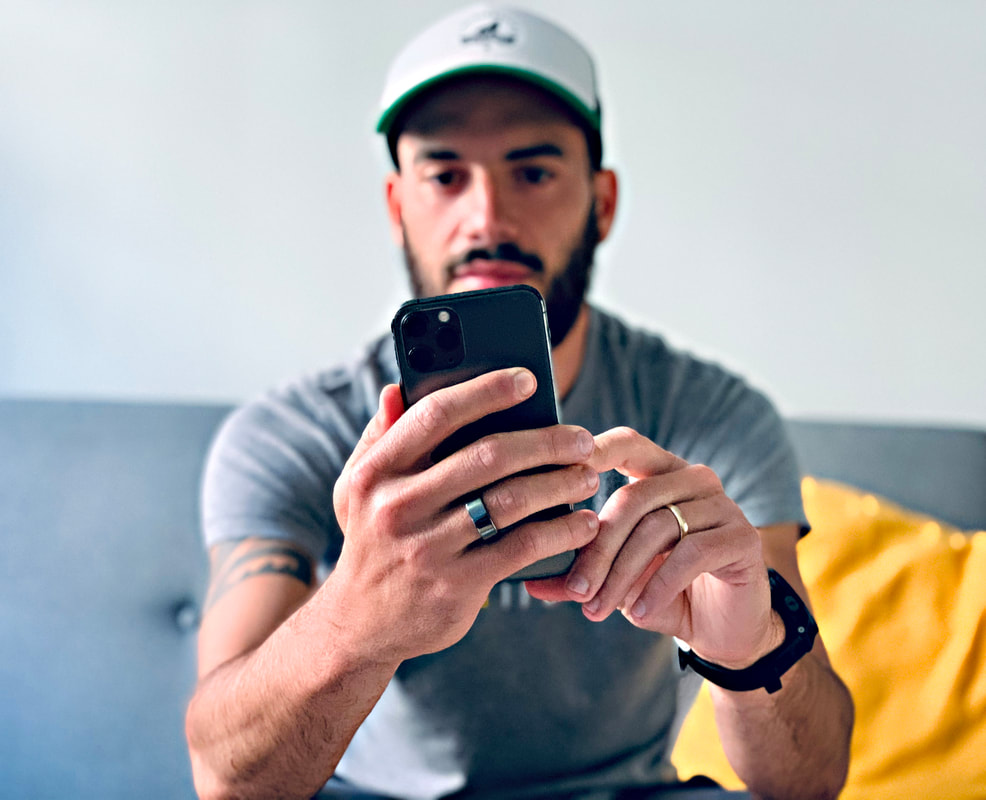
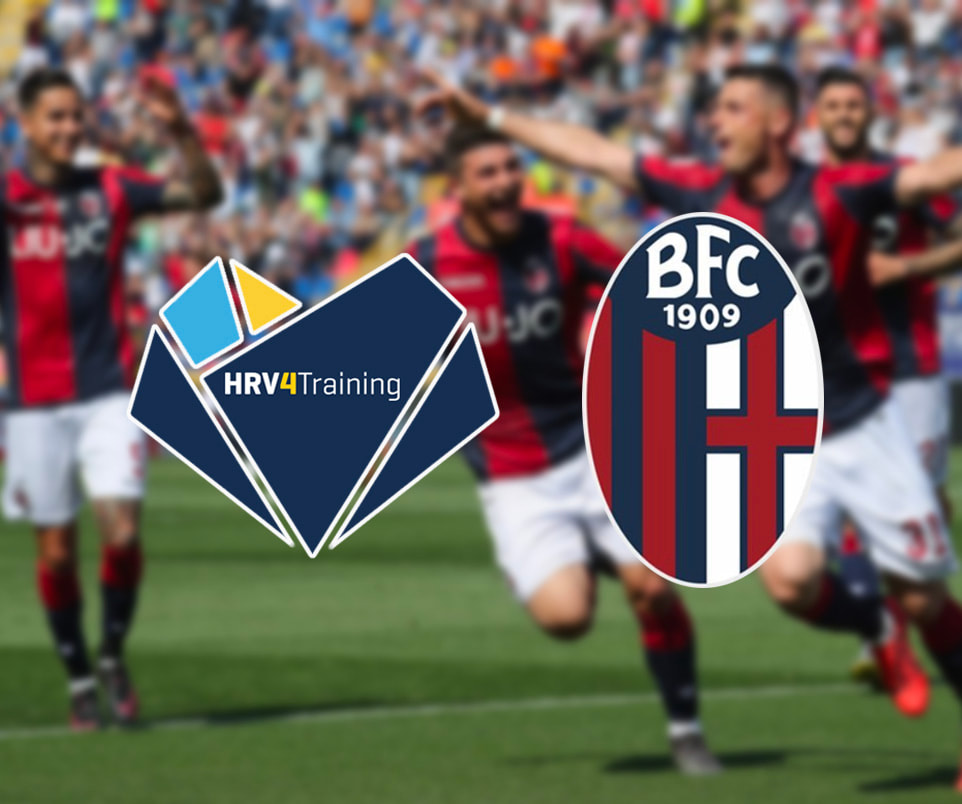
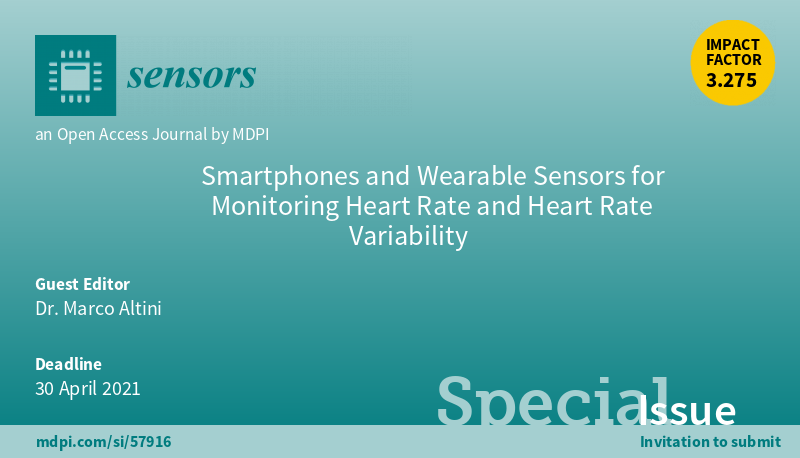
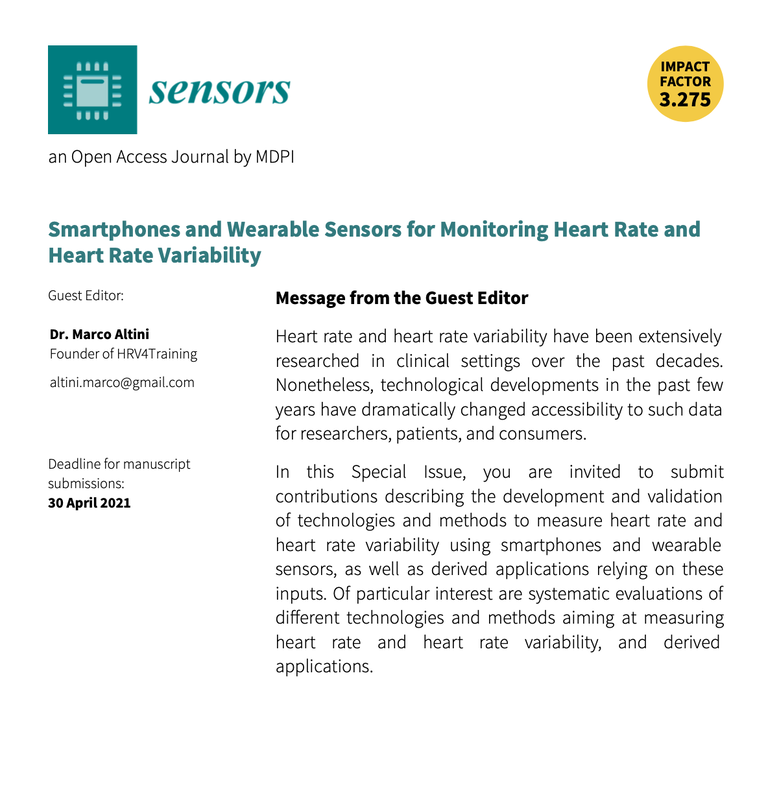
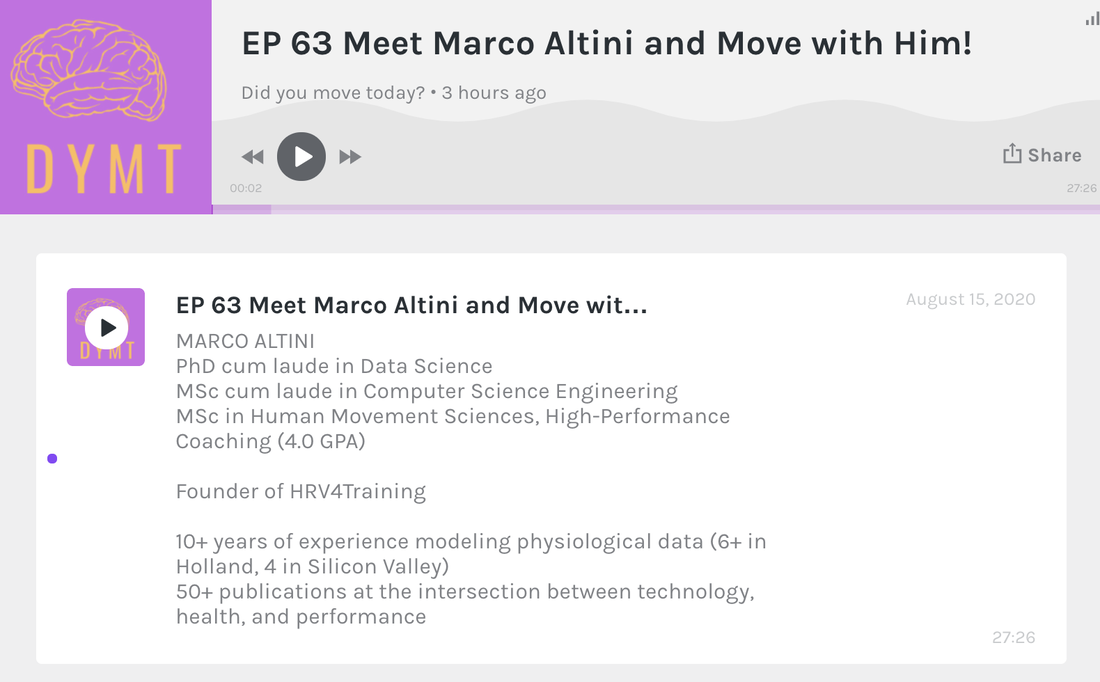
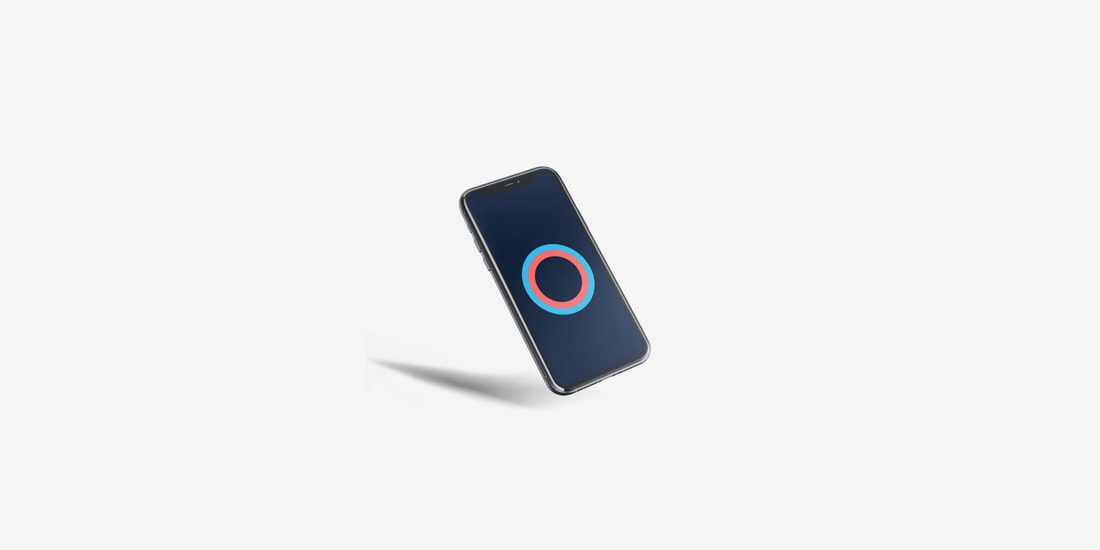
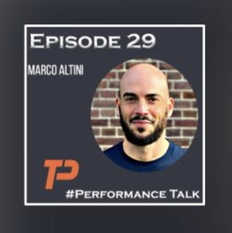

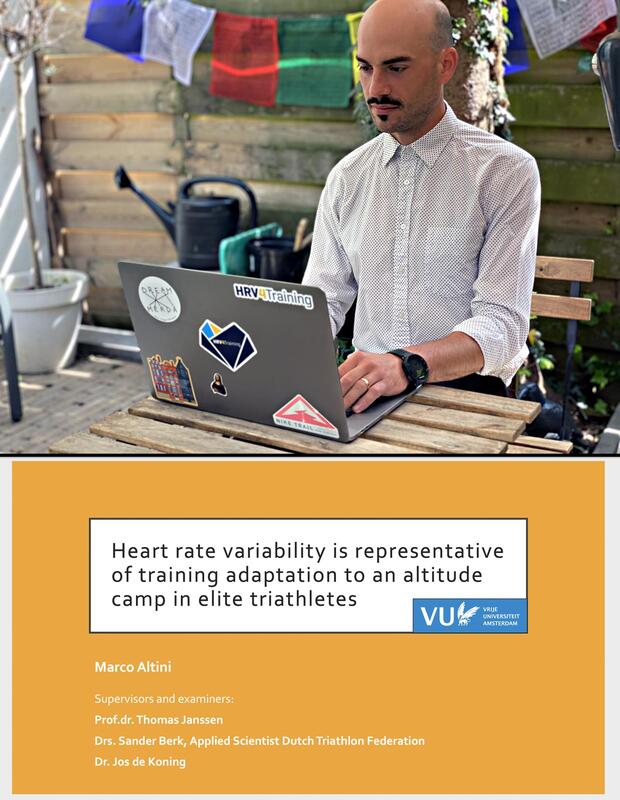
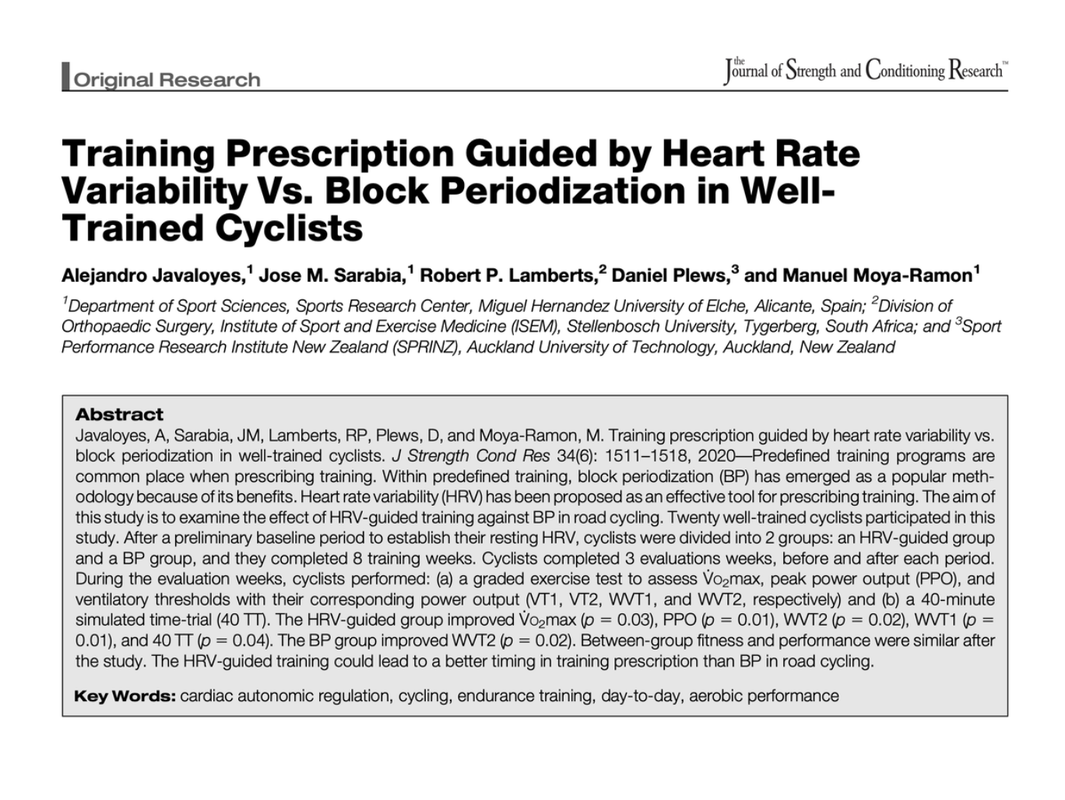
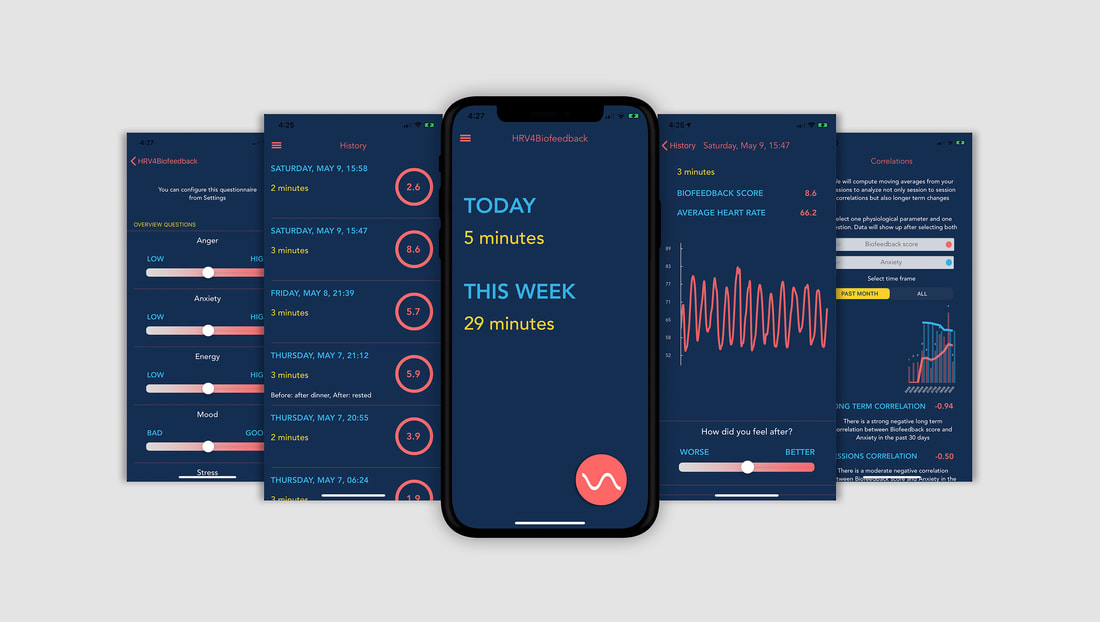

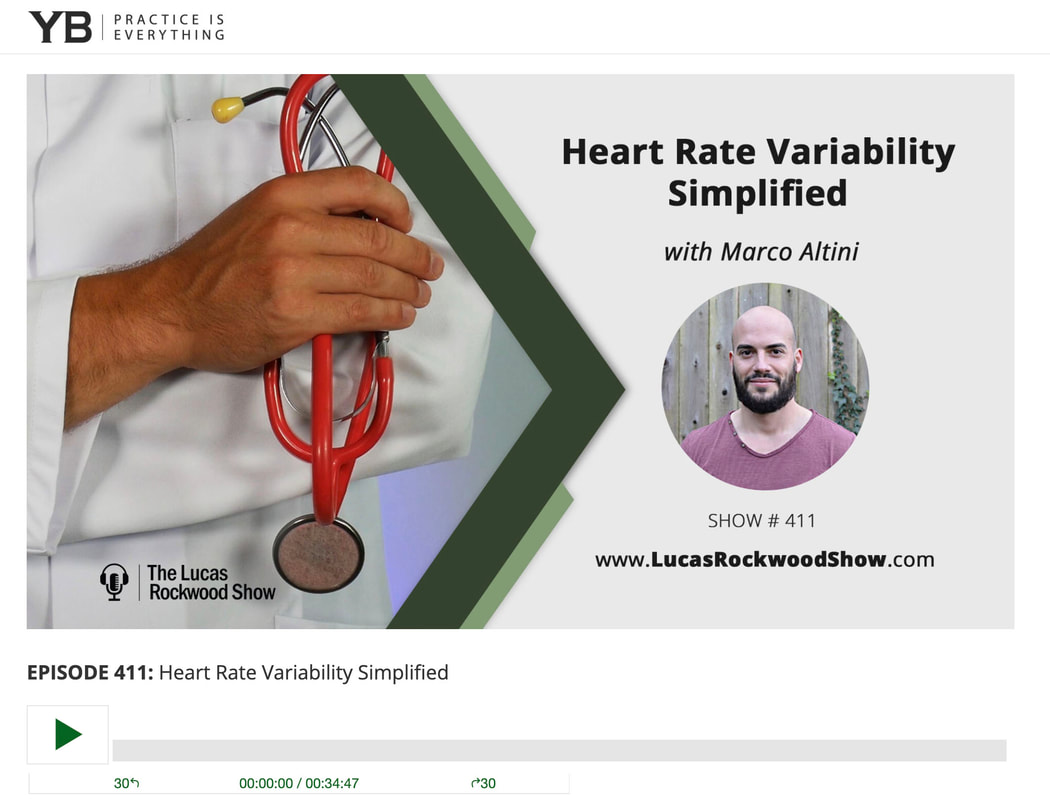
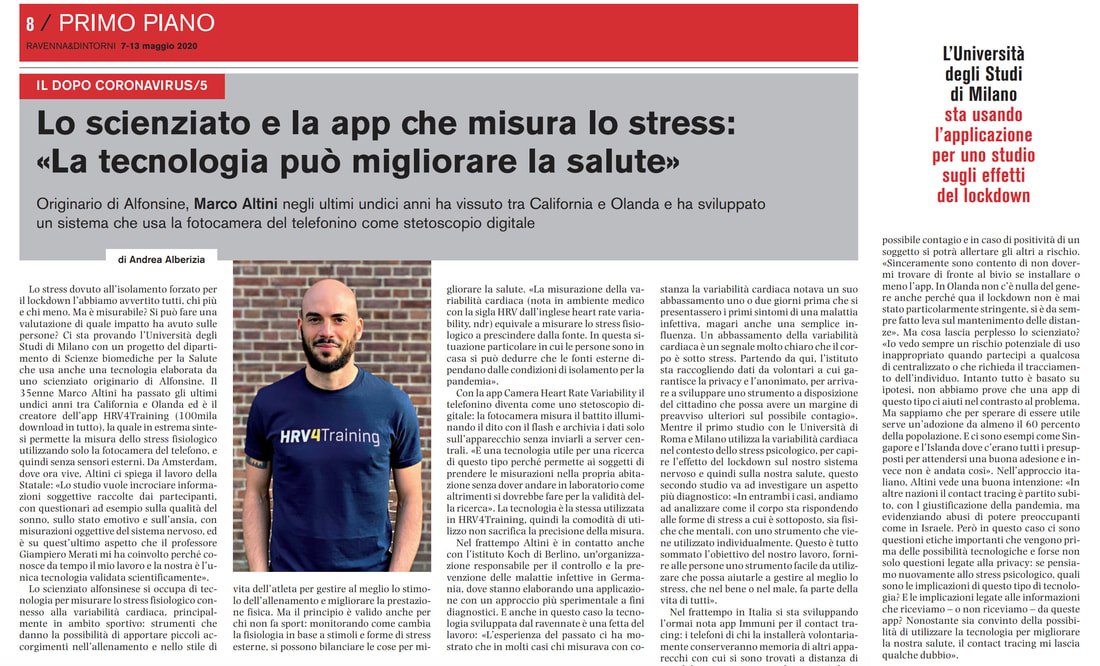
 RSS Feed
RSS Feed